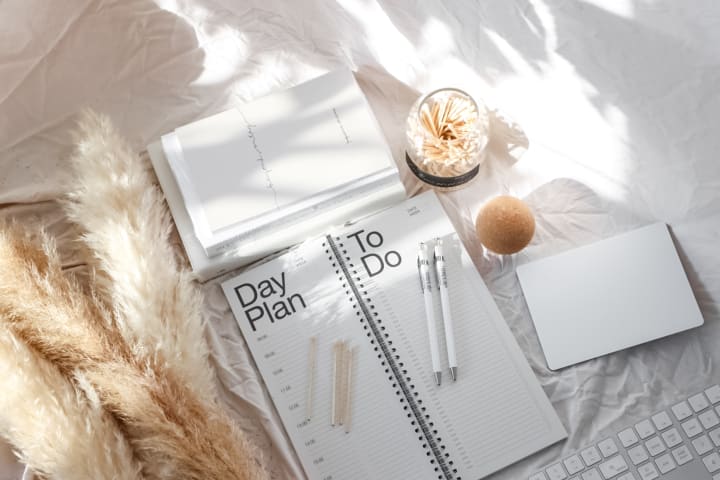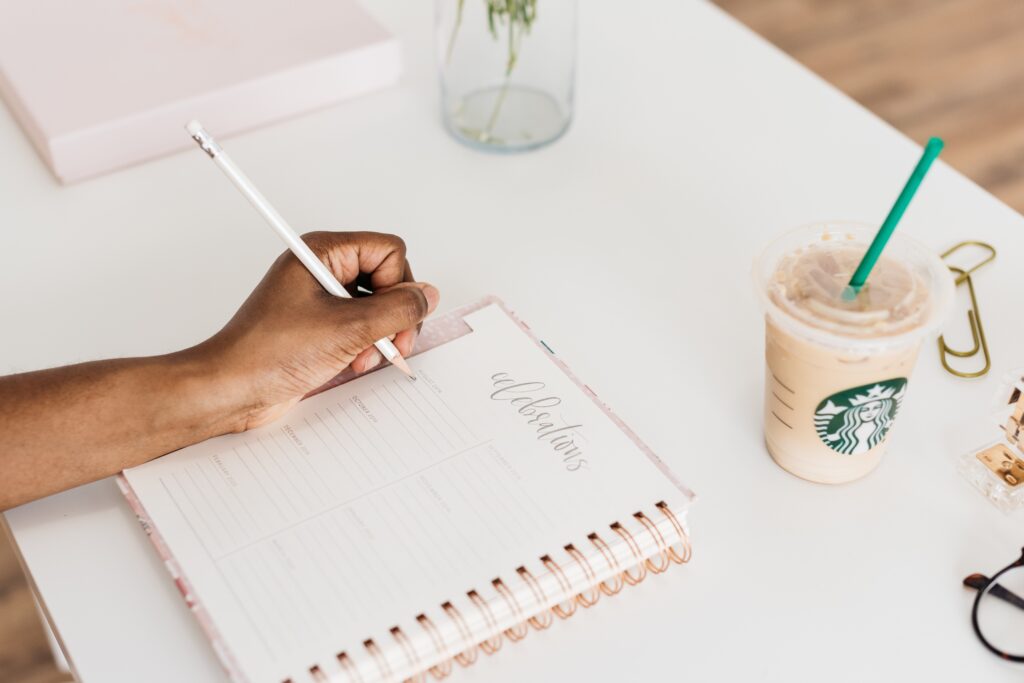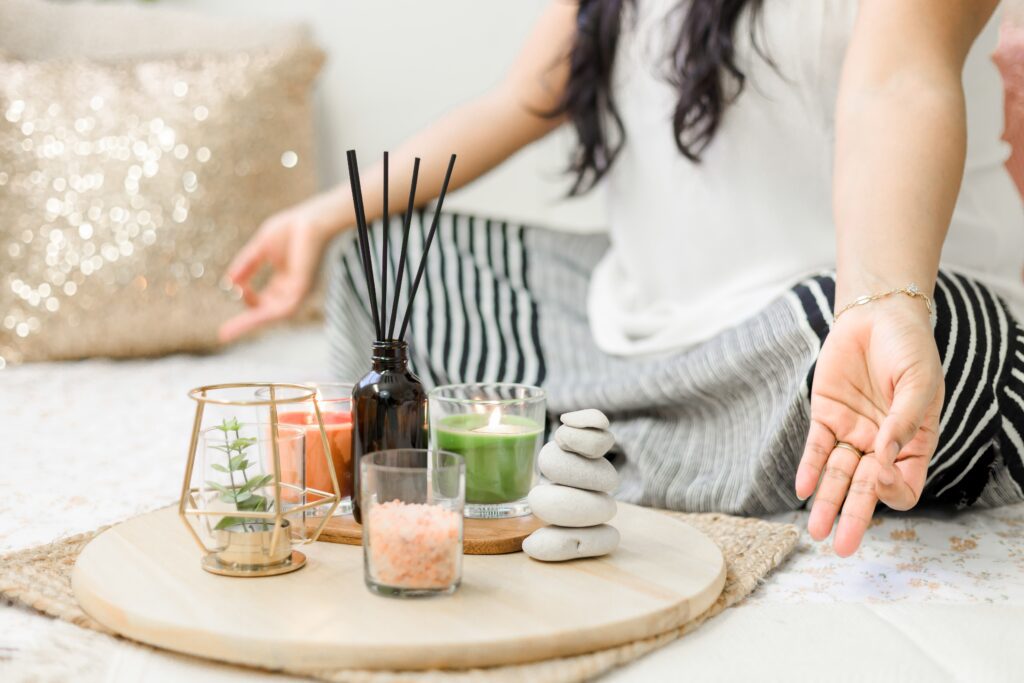Everyone has a different concept of wellness in their minds, and as individuals, we are constantly trying to create our own definitions.
It would be so good if we could machine-program ourselves or make prioritizing our well-being an automated task.
But it just doesn’t work that way!
On difficult days we need support to go through. Whether we are going through a physical or emotional struggle, a little help is all we need to thrive and keep ourselves together.
A wellness toolkit can become that thread that holds your well-being together. A beacon of hope which can guide you and have your back in difficult times.
Creating a personalized wellness toolkit can be a challenge in itself. But along the way you’ll find that getting started wasn’t so daunting after all!
What Is a Wellness Toolkit?
Do you maintain a specific space for all stuff in your home?
For medicine, you create a first-aid box, or for any mending and fixing, you have a hardware box where all the types of gear are so you can find the right tool in the needed situation.
Just like a toolbox contains various equipment for various tasks, a wellness toolkit includes a collection of practices to address different facets of your well-being.
A wellness toolkit is a set of activities, rituals, apps, daily essentials, or any hobby that helps you deal with problems in your life.
It is like a metaphorical treasure chest filled with a range of practices and approaches that are tailored to your specific need and preferences to achieve your health goals.
It can be anything from physical things or your everyday practices that can be utilized to maintain your physical, mental, and emotional health.
If you are suffering from any mental and physical illness or struggling to manage your daily stress, you can evaluate your needs and practices that work for you and include them in your wellness toolbox list. So when you need them, you will know exactly what you need and what works for you the best.
How a Wellness Toolkit Can Help You Reach Your Health Goals

Image credit to Laura chouette on Unsplash
There is often the presence of stress, difficulties, and unexpected challenges in life. Having a wellness toolkit that is equipped with the necessary resources at your disposal helps you navigate out of these situations effectively. It empowers you to take proactive steps toward your resilience and commit to your desired goals.
Flexibility
While building your personalized wellness toolkit, you are offered an extended range of choices, which allows you to alter your strategies based on your changing needs. Having this flexibility ensures that you continue to progress towards your aim and even face any challenges and setbacks.
Empowers Your Confidence
With the wellness toolkit, you can be an active contributor to your healing journey. It makes prioritizing your wellness an easier task with a variety of self-care approaches.
Having different strategies empowers you to take charge of your well-being and the choices you make to support your health goal. This sense of empowerment boosts your confidence.
Personalization
Every individual has a different wellness goal. And to attain it, a person needs a personalized approach.
Having a wellness toolkit allows you to custom-build your toolbox. You can make it unique to you, and add in resources that resonate with your needs and preferences.
This personalization allows you to create a unique approach to your well-being that feels more authentic and helps you reach your desired goal.
How to Create a Wellness Toolkit: A Step-by-Step Guide
Building your wellness toolbox involves recognizing and incorporating tools and practices. It requires self-reflection, experimentation, and an open mind to find strategies that work best for you. Think of it as a collection of activities that help you go through your daily challenge and support your well-being.
1. Assess Your Needs
Okay! Before diving straight into building your wellness toolkit, it is important to assess your needs. For what purpose you are building this wellness toolkit?
Let’s start by reflecting.
Consider your current state of well-being and the areas of your life that require improvement. Ask yourself these questions:
What causes me stress or drains my energy?
What practices can make me feel rejuvenated?
Which area of my life have I been neglecting due to lack of time and prioritization?
Addressing these questions helps you determine which aspects of your life need your most attention and what practices will be valuable for improving your well-being.
This self-reflection serves as the foundation for curating your personalized wellness toolkit.
2. Set Clear and Measurable Goals
Now that you have assessed your needs, set clear and measurable intentions. Do you want to reduce your daily stress and delay burnout, or improve life satisfaction? Having specific goals will enable you to tailor your toolbox as per your progress over time.
3. Identify Resources
After you have reflected on your purposes for building a wellness toolkit, find the resources that will help you attain them.
It can include a wide range of sources like books, apps, websites, and expert advice that can guide and support you in times of need.
For instance, If you want to make your mental health an everyday priority and reduce stress and anxiety, put mindfulness practices, guided meditation sessions, and even self-improvement and mental health books into your toolkit. And if physical fitness is your focus, you may curate some healthy recipes, buy fitness trackers, or detox plans to eliminate toxins from your body.

4. Find Out What Works for You
While it is best to stick to the tools you have tried, you can occasionally approach new practices and techniques to know if they add to your well-being and can be included in your toolkit.
Having a wide range of wellness tools allows you to switch between them so that they can remain effective for a long period of time and help you approach your wellness goal more easily.
5. Build a List
When you are struggling with your daily tussles, it is hard to think of even a single tool that might help you go through your hard time, and the mental stress it creates is another story.
In those times when you have a list of your wellness toolkit, your mental burden is lessened. Having physical proof of your wellness toolkit is always considered more effective than keeping things in mind. You don’t always have to stress yourself to remember every time what you need at the moment. You just have to reach out to your list and follow the selected practice that you need at the moment.
For building a more effective toolkit list, group your tools according to how often you need them, or you can categorize them as per your different goals.
For example, instead of writing down everything on a page, group them into categories such as daily wellness tasks, self-care rituals, things that encourage relaxation every day, or something you indulge in once in a while.
6. Incorporate into Your Daily Ritual
You did it! You have successfully created a wellness toolkit that will help you achieve your wellness goal. Now it is time to put this into gear.
Build a daily routine that will comprise these wellness tools at your convenience. Make an effort to create room for these practices by prioritizing and organizing your day. Being consistent even when you don’t feel like practicing them will keep you going through difficult times and help you build stability.
Utilizing Your Wellness Toolkit
After you have curated and personalized your toolkit, make sure that you are utilizing it well to attain your wellness goals. Because just having a wellness toolkit is not enough. You have to learn how to use its content effectively.
- Self-Awareness
Recognize your triggers and needs. Understand which tool from your toolkit works most effectively for you in different situations.
- Consistency
Practice using your wellness toolkit every day, when you need it and even when you don’t need it. Make them a part of your daily routine and make them readily available when needed.
- Adaptability
Don’t be afraid to grow and evolve. Be open to exploring new tools and methods to expand your toolkit list.
As you grow, your toolkit should also expand with you to accommodate your changing needs. So be flexible enough and update your toolkit as you require. You can refine your list, add to it or take things away over time. After all, it’s your personalized wellness toolkit.
Everyday Simple Practices to Include in Your Toolkit

1. Stress Management and Relaxation
The stability of your mental and emotional well-being is equally vital. It is the main contributor to your inner peace and calmness. Consider forming techniques such as mindful walking, gratitude journaling, reading affirmation cards, or listening to podcasts that bring you comfort and joy.
2. Physical Activities
Improving your physical health should always be your aim and priority. Follow a particular diet for balanced nutrition, Pilates, go on a hike or play any sports that will give your body a good workout. Including these activities in your wellness toolkit will greatly impact your overall health and keep you aligned with your health goals.
3. Mindfulness Practices
Mindfulness is a potent tool for managing stress and promoting your well-being. Consider adding any mindfulness practices such as mindful morning meditation, mindful eating, and mindful journaling into your toolkit. These practices help you manage your emotions better and cultivate a renewed sense of inner peace.
4. Self-Care Rituals
Indulge in self-care rituals as often as you can. It is the single best ritual that consists of practices that have the sole purpose of nurturing you. Whether it is taking long walks, drinking your favorite tea, making skincare routines, or soaking your tired self in a hot bath. These daily small acts of self-love can leave a proud effect on nurturing your overall well-being.
5. Professional Support
If you think a wellness toolkit isn’t enough to help you in your self-heal journey, don’t hesitate to seek professional support. Healthcare professionals can provide you with guidance, and support you in your challenging times through guided counseling or different therapy that help you stay well.
6. Social Connection
Building and nurturing healthy relationships is vital for your emotional stability. That’s why human connection plays an important role in building emotional support and a sense of belonging.
Dedicate time to interacting with your friends and family or allocating some time to socializing and participating in any communal events or gatherings.
Build Your Own Personalized Wellness Toolkit
Take the time to assess and reflect on different strategies and approaches to regularly replenish your toolbox to ensure it remains relevant and effective, so it provides a comprehensive approach to maintaining your physical, mental, and emotional well-being.
A wellness toolkit is a valuable personal resource for every individual who is striving to reach their health goals.
By assessing your needs and incorporating practices, you can curate a personalized wellness toolkit that supports you in your journey toward optimal health goal.





